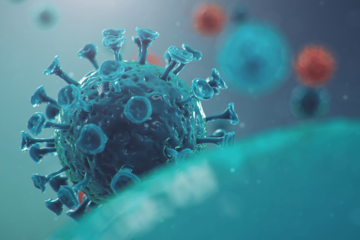We found 106 results that contain "scien"
Posted on: Educational outcomes.


Education sciences edit 2
Education sciences,[1] also known as education studies, education theory, and traditionally called pedagogy,[2] seek to describe, understand, and prescribe education policy and practice. Education sciences include many topics, such as pedagogy, andragogy, curriculum, learning, and education policy, organization and leadership. Educational thought is informed by many disciplines, such as history, philosophy, sociology, and psychology.
edit 1
Faculties, departments, degree programs, and degrees on education sciences are often called simply faculty of education etc.[3] It is likewise still common to say she is studying education, which is only very rarely expressed as studying education science(s) and was traditionally called studying pedagogy (in English) in most European countries. Similarly, educational theorists may be known as pedagogues depending on the country.
edit 1
Faculties, departments, degree programs, and degrees on education sciences are often called simply faculty of education etc.[3] It is likewise still common to say she is studying education, which is only very rarely expressed as studying education science(s) and was traditionally called studying pedagogy (in English) in most European countries. Similarly, educational theorists may be known as pedagogues depending on the country.
DISCIPLINARY CONTENT
Posted on: #iteachmsu


Science and technology
Science and technology is a topic that encompasses science, technology, and the interactions between the two. Science is a systematic enterprise that builds and organizes knowledge in the form of explanations and predictions about nature and the universe. Technology is the collection of techniques, methods or processes used in the production of goods or services or in the accomplishment of objectives, such as scientific investigation, or any other consumer demands.
Posted on: #iteachmsu


How Iceland hammered COVID with science
Driving along Reykjavik’s windswept roads on a cold March morning, Kári Stefánsson turned up the radio. The World Health Organization had just announced that an estimated 3.4% of people infected with SARS-CoV-2 would die — a shockingly high fatality rate, some 30 times larger than that for seasonal influenza.
There was a problem with that estimate, however: it was based on reported cases of COVID-19, rather than all cases, including mild and asymptomatic infections. “I couldn’t figure out how they could calculate it out without knowing the spread of the virus,” recalls Stefánsson, who is the founder and chief executive of deCODE genetics, a human-genomics company in Reykjavik. He became convinced that making sense of the epidemic, and protecting the people of Iceland from it, would require a sweeping scientific response.
There was a problem with that estimate, however: it was based on reported cases of COVID-19, rather than all cases, including mild and asymptomatic infections. “I couldn’t figure out how they could calculate it out without knowing the spread of the virus,” recalls Stefánsson, who is the founder and chief executive of deCODE genetics, a human-genomics company in Reykjavik. He became convinced that making sense of the epidemic, and protecting the people of Iceland from it, would require a sweeping scientific response.
Posted on: #iteachmsu


Data Science in Digital Marketing
The digital revolution is now sweeping small towns and villages perhaps driven by increased accessibility at affordable data costs? The whole world is in our hands and the increase in the usage of digital in rural India, where more than two-thirds of active internet users are present is a great opportunity and a win-win situation for both. They are trying to meet their entertainment and communication needs and we can help them provide the best of service in addition to winning their hearts and pocket.
ASSESSING LEARNING
Posted on: #iteachmsu


Speech recognition
https://www.google.com/search?rlz=1C5GCEA_enLK882LK883&ei=5S7rX7WrN8jw9QOh-4KYAQ&q=chemical+tests&oq=chemical+tests&gs_lcp=CgZwc3ktYWIQAzIFCAAQyQMyAggAMgIIADICCAAyAggAMgIIADICCAAyAggAMgIIADICCAA6CAgAEMkDEJECOgUIABCRAjoKCAAQsQMQgwEQQzoICAAQsQMQgwE6BQgAELEDOgIILjoECAAQQzoOCC4QsQMQgwEQxwEQrwE6BwguELEDEEM6BQguELEDOgoIABCxAxDJAxBDOgcIABCxAxBDOggILhDHARCvAToGCAAQFhAeOggIABAWEAoQHlDs-esXWIea7BdgrZvsF2gCcAF4AYABoQKIAeARkgEGMC4xMy4ymAEAoAEBqgEHZ3dzLXdperABAMABAQ&sclient=psy-ab&ved=0ahUKEwj1se7ipfPtAhVIeH0KHaG9ABMQ4dUDCA0&uact=5
Speech recognition is an interdisciplinary subfield of computer science and computational linguistics that develops methodologies and technologies that enable the recognition and translation of spoken language into text by computers. It is also known as automatic speech recognition (ASR), computer speech recognition, or speech to text (STT).
Speech recognition is an interdisciplinary subfield of computer science and computational linguistics that develops methodologies and technologies that enable the recognition and translation of spoken language into text by computers. It is also known as automatic speech recognition (ASR), computer speech recognition, or speech to text (STT).
ASSESSING LEARNING
Posted on: #iteachmsu


Agriculture
Megan’s work as the first Communication Arts & Sciences Leadership Development Fellow established strong connections with Dean Prabu David as she supported his goal of improving the graduate student experience. Together, they began a 1-credit course to increase awareness of college offerings and university resources, socialize students in the college, and begin to build community. Further, Megan worked with the college’s only GSO, The Association of Graduate Students in Communication (AGSCOM), to facilitate its official recognition as an RSO and supported Karen Cleveland’s new GSO in the Department of Media & Information. A September 2017 meeting between Megan, Dean David, and Matt Helm, the Director of Graduate Student Life & Wellness at the time, led to a social event held at the college that saw graduate students sharing lunch and discussing plans for future social events held off-campus.
ASSESSING LEARNING
Posted on: Group 2

What is Attention Deficit Hyperactivity Disorder?
Primer text from The College of William & Mary
ADHD is one of the most commonly diagnosed conditions of children (Centers for Disease
Control and Prevention, 2015).
In a 2016 Centers for Disease Control and Prevention study, scientists found that 6.1 million children aged 2-17 years living in the U.S. had been diagnosed with attention-deficit/hyperactivity disorder (ADHD), which is similar to previous en
Ages 6-11: Approximately 2.4 million children
Ages 12-17: Approximately 3.3 million children
The diagnostic term attention deficit/hyperactivity disorder (ADHD) refers to individuals who display patterns of inattention, impulsivity, and overactive behavior that interfere with daily functioning (American Psychiatric Association [APA], 2013).
The Diagnostic and Statistical Manual (DSM) V (APA, 2013) criteria for diagnosing ADHD list
three types of ADHD and the accompanying characteristics.
ADHD is one of the most commonly diagnosed conditions of children (Centers for Disease
Control and Prevention, 2015).
In a 2016 Centers for Disease Control and Prevention study, scientists found that 6.1 million children aged 2-17 years living in the U.S. had been diagnosed with attention-deficit/hyperactivity disorder (ADHD), which is similar to previous en
Ages 6-11: Approximately 2.4 million children
Ages 12-17: Approximately 3.3 million children
The diagnostic term attention deficit/hyperactivity disorder (ADHD) refers to individuals who display patterns of inattention, impulsivity, and overactive behavior that interfere with daily functioning (American Psychiatric Association [APA], 2013).
The Diagnostic and Statistical Manual (DSM) V (APA, 2013) criteria for diagnosing ADHD list
three types of ADHD and the accompanying characteristics.
Posted on: #iteachmsu


Biology - Lesson 1
Key Points
Biology has evolved as a field of science since it was first studied in ancient civilizations, although modern biology is a relatively recent field.
Science is a process that requires the testing of ideas using evidence gathered from the natural world. Science is iterative in nature and involves critical thinking, careful data collection, rigorous peer review, and the communication of results.
Science also refers to the body of knowledge produced by scientific investigation.
Pseudoscience is a belief presented as scientific although it is not a product of scientific investigation
Biology has evolved as a field of science since it was first studied in ancient civilizations, although modern biology is a relatively recent field.
Science is a process that requires the testing of ideas using evidence gathered from the natural world. Science is iterative in nature and involves critical thinking, careful data collection, rigorous peer review, and the communication of results.
Science also refers to the body of knowledge produced by scientific investigation.
Pseudoscience is a belief presented as scientific although it is not a product of scientific investigation
NAVIGATING CONTEXT
Posted on: #iteachmsu


Business Intelligence and Data Science
Business Intelligence and Data Science are two of the most recurring terms in the digital era. While both of them involve the use of data, they are totally different from one another. Data Science is the bigger pool containing greater information, BI can be thought of as a part of the bigger picture.
What is Business Intelligence?
Business Intelligence is a process of collecting, integrating, analyzing, and presenting the data. With Business Intelligence, executives and managers can have a better understanding of decision-making. This process is carried out through software services and tools.
Using Business Intelligence, organizations are able to several strategic and operational business decisions. Furthermore, BI tools are used for the analysis and creation of reports. They are also used for producing graphs, dashboards, summaries, and charts to help the business executives to make better decisions.
What is Business Intelligence?
Business Intelligence is a process of collecting, integrating, analyzing, and presenting the data. With Business Intelligence, executives and managers can have a better understanding of decision-making. This process is carried out through software services and tools.
Using Business Intelligence, organizations are able to several strategic and operational business decisions. Furthermore, BI tools are used for the analysis and creation of reports. They are also used for producing graphs, dashboards, summaries, and charts to help the business executives to make better decisions.
Authored by: Rupali
Assessing Learning
Posted on: #iteachmsu


Disease Control and Prevention study
ADHD is one of the most commonly diagnosed conditions of children (Centers for DiseaseControl and Prevention, 2015).
In a 2016 Centers for Disease Control and Prevention study, scientists found that 6.1 million children aged 2-17 years living in the U.S. had been diagnosed with attention-deficit/hyperactivity disorder (ADHD), which is similar to previous en
Ages 6-11: Approximately 2.4 million children
Ages 12-17: Approximately 3.3 million children
The diagnostic term attention deficit/hyperactivity disorder (ADHD) refers to individuals who display patterns of inattention, impulsivity, and overactive behavior that interfere with daily functioning (American Psychiatric Association [APA], 2013).
The Diagnostic and Statistical Manual (DSM) V (APA, 2013) criteria for diagnosing ADHD listthree types of ADHD and the accompanying characteristics
Ref :
In a 2016 Centers for Disease Control and Prevention study, scientists found that 6.1 million children aged 2-17 years living in the U.S. had been diagnosed with attention-deficit/hyperactivity disorder (ADHD), which is similar to previous en
Ages 6-11: Approximately 2.4 million children
Ages 12-17: Approximately 3.3 million children
The diagnostic term attention deficit/hyperactivity disorder (ADHD) refers to individuals who display patterns of inattention, impulsivity, and overactive behavior that interfere with daily functioning (American Psychiatric Association [APA], 2013).
The Diagnostic and Statistical Manual (DSM) V (APA, 2013) criteria for diagnosing ADHD listthree types of ADHD and the accompanying characteristics
Ref :
Authored by: William
Assessing Learning
Posted on: #iteachmsu


Computer Science
Computer science is the study of computers and computational systems. It is a broad field which includes everything from the algorithms that make up software to how software interacts with hardware to how well software is developed and designed.
Some common job titles for computer scientists include:
Computer Programmer
Information Technology Specialist
Data Scientist
Web Optimization Specialist
Database Administrator
Systems Analyst
Web Developer
https://projects.invisionapp.com/d/main?origin=v7#/console/20294675/474484363/inspect
Some common job titles for computer scientists include:
Computer Programmer
Information Technology Specialist
Data Scientist
Web Optimization Specialist
Database Administrator
Systems Analyst
Web Developer
https://projects.invisionapp.com/d/main?origin=v7#/console/20294675/474484363/inspect
Authored by: Shweta
Assessing Learning
Posted on: #iteachmsu


computer science
Computer science focuses on the development and testing of software and software systems. It involves working with mathematical models, data analysis and security, algorithms, and computational theory. Computer scientists define the computational principles that are the basis of all software.
Posted by: Super Admin
Posted on: #iteachmsu


The relationship between science and technology
Science, technology and innovation each represent a successively larger category of activities which are highly interdependent but distinct. Science contributes to technology in at least six ways: (1) new knowledge which serves as a direct source of ideas for new technological possibilities; (2) source of tools and techniques for more efficient engineering design and a knowledge base for evaluation of feasibility of designs; (3) research instrumentation, laboratory techniques and analytical methods used in research that eventually find their way into design or industrial practices, often through intermediate disciplines; (4) practice of research as a source for development and assimilation of new human skills and capabilities eventually useful for technology; (5) creation of a knowledge base that becomes increasingly important in the assessment of technology in terms of its wider social and environmental impacts; (6) knowledge base that enables more efficient strategies of applied research, development, and refinement of new technologies.
Posted by: Greg Thomsan
Posted on: #iteachmsu

Fundamental concepts in nanoscience and nanotechnology- New technology- new
Fundamental concepts in nanoscience and nanotechnology- New technology
test
test
Authored by: Chathuri hewapathirana
Navigating Context
Posted on: #iteachmsu


ADHD Misconceptions
https://www.sciencedaily.com/releases/2016/10/161013103134.htm
Attention-deficit hyperactivity disorder (ADHD) is a very common condition diagnosed mainly in children.
According to the Centers for Disease Control and Prevention (CDC), 6.4 million children between four and 17 years of age have been diagnosed with ADHD as of 2011.
This primer is designed to help you understand ADHD at a deeper level and combat misconceptions.
Fact: An ADHD diagnosis requires observations of numerous symptoms in multiple settings and evidence of significant impairment.
Children are inherently energetic, sometimes even rowdy. If unruly behavior is the only symptom, then it’s difficult for a professional to say that their problem is truly a mental illness.
“ADHD is a real mental disorder. There are a myriad of reasons why children are inattentive, such as anxiety or inadequate sleep, but a child with attention-deficit disorder (ADD) or ADHD does have a condition. Diagnosis will require observations of numerous symptoms in multiple settings and evidence of significant impairment.” - Joshua Cabrera, MD, clinical psychiatrist and assistant professor at the Texas A&M College of Medicine.
The main symptoms of ADHD are inattention, hyperactivity and impulsivity.
These can manifest in different ways: persistent fidgeting, being easily distracted or forgetful and difficulty waiting for a turn.
Attention-deficit hyperactivity disorder (ADHD) is a very common condition diagnosed mainly in children.
According to the Centers for Disease Control and Prevention (CDC), 6.4 million children between four and 17 years of age have been diagnosed with ADHD as of 2011.
This primer is designed to help you understand ADHD at a deeper level and combat misconceptions.
Fact: An ADHD diagnosis requires observations of numerous symptoms in multiple settings and evidence of significant impairment.
Children are inherently energetic, sometimes even rowdy. If unruly behavior is the only symptom, then it’s difficult for a professional to say that their problem is truly a mental illness.
“ADHD is a real mental disorder. There are a myriad of reasons why children are inattentive, such as anxiety or inadequate sleep, but a child with attention-deficit disorder (ADD) or ADHD does have a condition. Diagnosis will require observations of numerous symptoms in multiple settings and evidence of significant impairment.” - Joshua Cabrera, MD, clinical psychiatrist and assistant professor at the Texas A&M College of Medicine.
The main symptoms of ADHD are inattention, hyperactivity and impulsivity.
These can manifest in different ways: persistent fidgeting, being easily distracted or forgetful and difficulty waiting for a turn.
Authored by: Viju
Disciplinary Content
Posted on: Smoke testing group...

Education is the transmission of knowledge
In prehistory, education happened informally through oral communication and imitation. With the rise of ancient civilizations, writing was invented, and the amount of knowledge grew. This caused a shift from informal to formal education. Initially, formal education was mainly available to elites and religious groups. The invention of the printing press in the 15th century made books more widely available. This increased general literacy. Beginning in the 18th and 19th centuries, public education became more important. This development led to the worldwide process of making primary education available to all, free of charge, and compulsory up to a certain age. Today, over 90% of all primary-school-age children worldwide attend primary school.
Authored by: Jyoti
Disciplinary Content
Posted on: #iteachmsu
![Article preview image]()
Science and technology is a topic that encompasses science, technology, and the interactions between the two. Science is a systematic enterprise that builds and organizes knowledge in the form of explanations and predictions about nature and the universe. Technology is the collection of techniques, methods or processes used in the production of goods or services or in the accomplishment of objectives, such as scientific investigation, or any other consumer demands.
Science may drive technological development, by generating demand for new instruments to address a scientific question, or by illustrating technical possibilities previously unconsidered. In turn, technology may drive scientific investigation, by creating demand for technological improvements that can only be produced through research, and by raising questions about the underlying principles that a new technology relies on.
For the majority of human history, technological improvements were achieved by chance, trial and error, or spontaneous inspiration. When the modern scientific enterprise matured in the Enlightenment, it primarily concerned itself with basic questions of nature. Research and development directed towards immediate technical application is a relatively recent occurrence, arising with the Industrial Revolution and becoming commonplace in the 20th century.
As academic fields, science and technology are often grouped with engineering and mathematics, as the STEM fields.
Science may drive technological development, by generating demand for new instruments to address a scientific question, or by illustrating technical possibilities previously unconsidered. In turn, technology may drive scientific investigation, by creating demand for technological improvements that can only be produced through research, and by raising questions about the underlying principles that a new technology relies on.
For the majority of human history, technological improvements were achieved by chance, trial and error, or spontaneous inspiration. When the modern scientific enterprise matured in the Enlightenment, it primarily concerned itself with basic questions of nature. Research and development directed towards immediate technical application is a relatively recent occurrence, arising with the Industrial Revolution and becoming commonplace in the 20th century.
As academic fields, science and technology are often grouped with engineering and mathematics, as the STEM fields.
Posted by: Chathuri Super admin..
Disciplinary Content
Posted on: #iteachmsu

Data Science::
Data Science is a comprehensive process that involves preprocessing, analysis, visualization, and prediction. On the other hand, AI is the implementation of a predictive model to forecast future events.
A Data Scientist, on the other hand, helps the company and businesses to make careful data-driven decisions. A Data Scientist is responsible for extracting data using SQL and NoSQL queries, cleaning various anomalies in the data, analyzing the patterns in data, and applying predictive models.
Data Science is a comprehensive process that involves preprocessing, analysis, visualization, and prediction. On the other hand, AI is the implementation of a predictive model to forecast future events.
A Data Scientist, on the other hand, helps the company and businesses to make careful data-driven decisions. A Data Scientist is responsible for extracting data using SQL and NoSQL queries, cleaning various anomalies in the data, analyzing the patterns in data, and applying predictive models.
Posted by: Rupali Jagtap
Assessing Learning
Posted on: #iteachmsu

Data Science is a process of extracting, manipulating, visualizing, maintaining data as well as generating predictions.
A Data Scientist is supposed to have knowledge of various data operations as well as machine learning algorithms. Using Data Science, industries are able to extract insights and forecast their performance.
A Data Scientist is supposed to have knowledge of various data operations as well as machine learning algorithms. Using Data Science, industries are able to extract insights and forecast their performance.
Posted by: Chathuri Super admin..
Assessing Learning
Posted on: #iteachmsu
![Article preview image]()
Science & technology is a topic that encompasses science, technology, and the interactions between the two. Science is a systematic enterprise that builds and organizes knowledge in the form of explanations and predictions about nature and the universe. Technology is the collection of techniques, methods or processes used in the production of goods or services or in the accomplishment of objectives, such as scientific investigation, or any other consumer demands.
Science may drive technological development, by generating demand for new instruments to address a scientific question, or by illustrating technical possibilities previously unconsidered. In turn, technology may drive scientific investigation, by creating demand for technological improvements that can only be produced through research, and by raising questions about the underlying principles that a new technology relies on.
For the majority of human history, technological improvements were achieved by chance, trial and error, or spontaneous inspiration. When the modern scientific enterprise matured in the Enlightenment, it primarily concerned itself with basic questions of nature. Research and development directed towards immediate technical application is a relatively recent occurrence, arising with the Industrial Revolution and becoming commonplace in the 20th century.
As academic fields, science and technology are often grouped with engineering and mathematics, as the STEM fields.
Science may drive technological development, by generating demand for new instruments to address a scientific question, or by illustrating technical possibilities previously unconsidered. In turn, technology may drive scientific investigation, by creating demand for technological improvements that can only be produced through research, and by raising questions about the underlying principles that a new technology relies on.
For the majority of human history, technological improvements were achieved by chance, trial and error, or spontaneous inspiration. When the modern scientific enterprise matured in the Enlightenment, it primarily concerned itself with basic questions of nature. Research and development directed towards immediate technical application is a relatively recent occurrence, arising with the Industrial Revolution and becoming commonplace in the 20th century.
As academic fields, science and technology are often grouped with engineering and mathematics, as the STEM fields.
Posted by: Chathuri Super admin..
Disciplinary Content
Posted on: #iteachmsu

The tools of business intelligence are also limited to the analysis of management information and curation of business strategies. However, the tools of a data scientist involve complex algorithmic models, data processing, and even big data tools. While BI focuses on generating reports based on the internal structured data, Data Science focuses on generating insights out of the data.
Posted by: Rupali Jagtap
Assessing Learning
Posted on: #iteachmsu

Data Science is a field that makes use of scientific methods and algorithms in order to extract knowledge and discover insights from data (structured on unstructured). Data Analytics is the process of using specialized systems and software to inspect information in datasets in order to derive conclusions
Posted by: Rupali Jagtap
Assessing Learning
Posted on: #iteachmsu


Technology ("science of craft", from Greek τέχνη, techne, "art, skill, cunning of hand"; and -λογία, -logia) is the sum of techniques, skills, methods, and processes used in the production of goods or services or in the accomplishment of objectives, such as scientific investigation.
Posted by: Greg Thomsan
Assessing Learning
Posted on: #iteachmsu

Computer science is the study of algorithmic processes, computational machines and computation itself.[1] As a discipline, computer science spans a range of topics from theoretical studies of algorithms, computation and information to the practical issues of implementing computational systems in hardware and software
Posted by: Chathuri Super admin..
Assessing Learning
Host: MSU Libraries

Artist Workshop: Using 360 Cameras to Show Changes to Place
Join the DSL Graduate Arts Fellow, Hailey Becker (Art, Art History and Design and Forestry) in a workshop on using 360 cameras to capture changes to place. Participants will be guided through the basics of recording and editing 360 footage, ending with their footage being displayed in the Digital Scholarship Lab 360 Room. Using 360 footage can be a great way to archive an artistic practice or scientific research. No experience required, all levels welcome!
Navigating Context
EXPIRED
Host: CTLI

Supporting Student Success Through Early Warning: Strategies for Graduate Teaching Assistants
On behalf of the GREAT office at The Graduate School, check out Supporting Student Success Through Early Warning: Strategies for Graduate Teaching Assistants
Date: Wednesday, September 10, 2025 - 11:00am to 12:00pm
Location: Zoom
Audience: Current Graduate Students & Postdocs
This interactive session is designed to support Graduate Teaching Assistants in recognizing and responding to early signs that students may be in need of support. Participants will explore their role in MSU’s early warning efforts and develop practical strategies to promote academic engagement, connection, and timely support. The session will include discussion of common indicators that students may be facing challenges affecting their educational success, strategies for effective communication, and how to use campus resources and reporting tools like EASE to provide timely support.
Facilitator(s):
Kanchan Pavangadkar, Director of Student Success for the College of Agriculture and Natural Resources (CANR)
Dwight Handspike, Director of Academic Advising & Student Success Initiatives, Undergraduate Academic Services, Broad College of Business
Samantha Zill, Human Biology & Pre-Health Advisor, Michigan State University, College of Natural Science
Maria O'Connell, University Innovation Alliance Fellow, Undergraduate Student Success Strategic Initiatives Manager, Office of Undergraduate Education
Register Here
**Zoom link will be sent closer to the workshop date.
Navigating Context
EXPIRED
Host: MSU Libraries

Annual Digital Humanities THATCamp 2025
Greetings from the MSU Digital Humanities Community!
Please share the following invitation with your faculty colleagues, students, and staff.
We would like to invite you and your colleagues to join us for the annual Digital Humanities THATCamp, taking place on Thursday, August 21st from 8:30AM - 3:00PM in the Digital Scholarship Lab of the MSU Main Library (Second Floor, West).
*Light breakfast, lunch will be served. Please join us for an Ice Cream Social from 3:15PM-4:30PM. Location outdoors, TBD.
Please register here.
What is THATCamp?
THATCamp stands for “The Humanities and Technology Camp.” It is an unconference: an open, less formal meeting where humanists and technologists of all skill levels learn and build together in sessions proposed on the spot (From: http://thatcamp.org/about).
Who is THATCamp for?
This day-long, in person, fun, unconference is a fantastic opportunity for people on campus, whether formally a part of the DH@MSU community or not, to gather, learn from each other, and make connections to carry forward into the academic year. We welcome:
Members of the DH@MSU community, old and new
Students in the Digital Humanities undergraduate minor or graduate certificate, and students interested in the minor/certificate
Humanists who are engaged in digital and computer-assisted research, teaching, and creation
Anyone doing or interested in exploring work in the digital, especially (but not exclusively) in the areas of arts, humanities, and social sciences
Why THATCamp MSU?
DH@MSU is continuing our annual THATCamp each August targeted at MSU faculty, staff, and students for a few reasons:
To bring people back together after the summer
To introduce new folks to the DH@MSU community
Share knowledge, expertise, and skills among the community
Build connections between community members for future collaborations, troubleshooting, and ice cream social time.
THATCamp is FREE! Please register here.
Please direct any questions to Max Evjen (evjendav@msu.edu).
Navigating Context
EXPIRED
